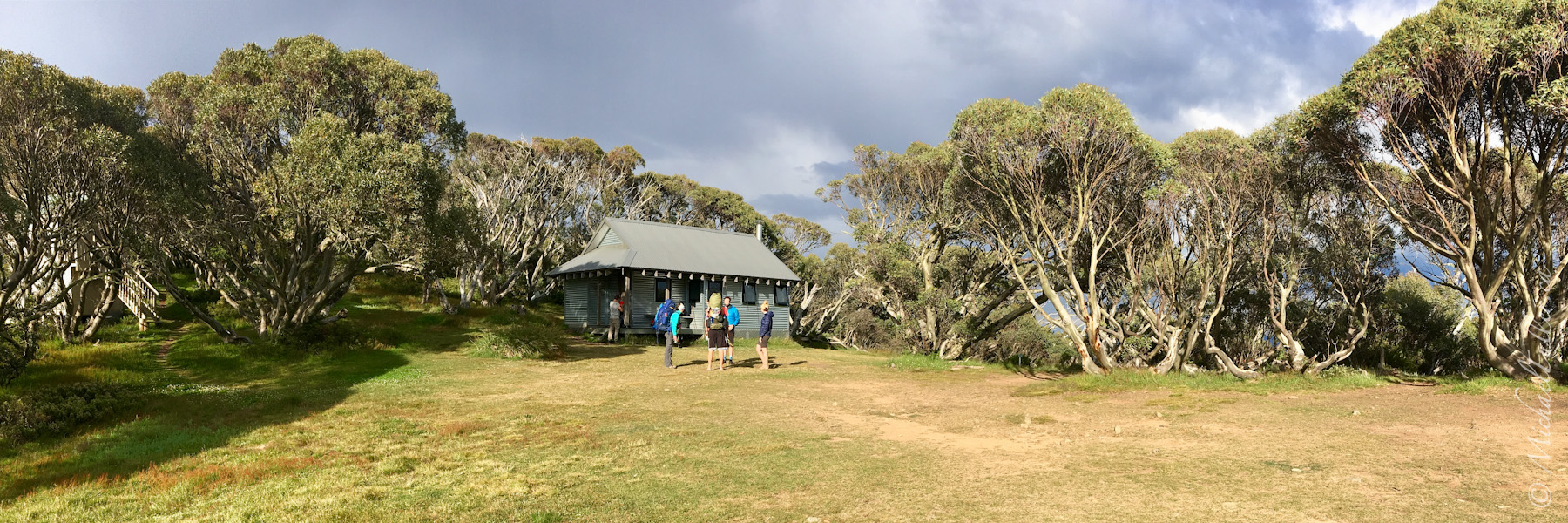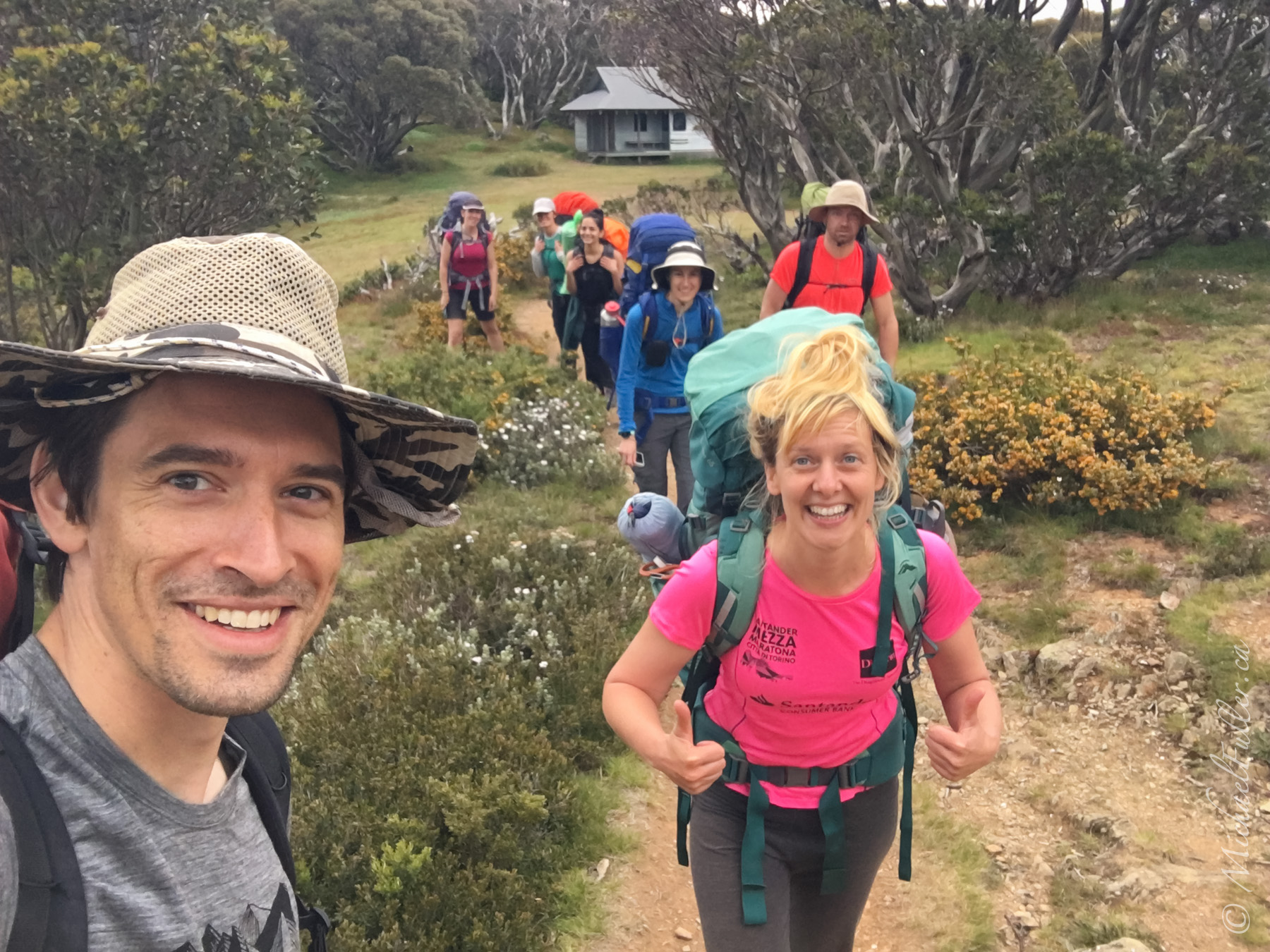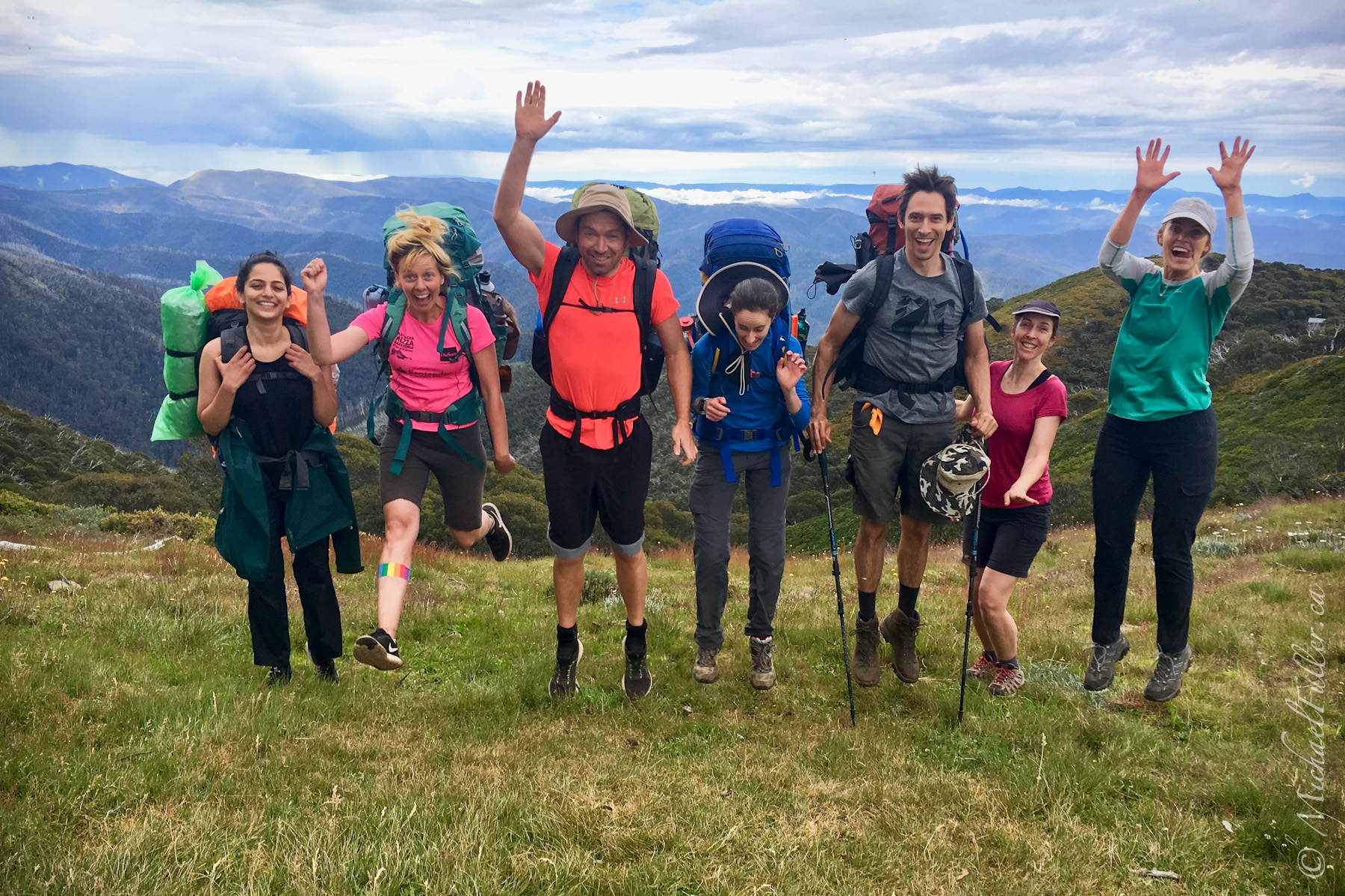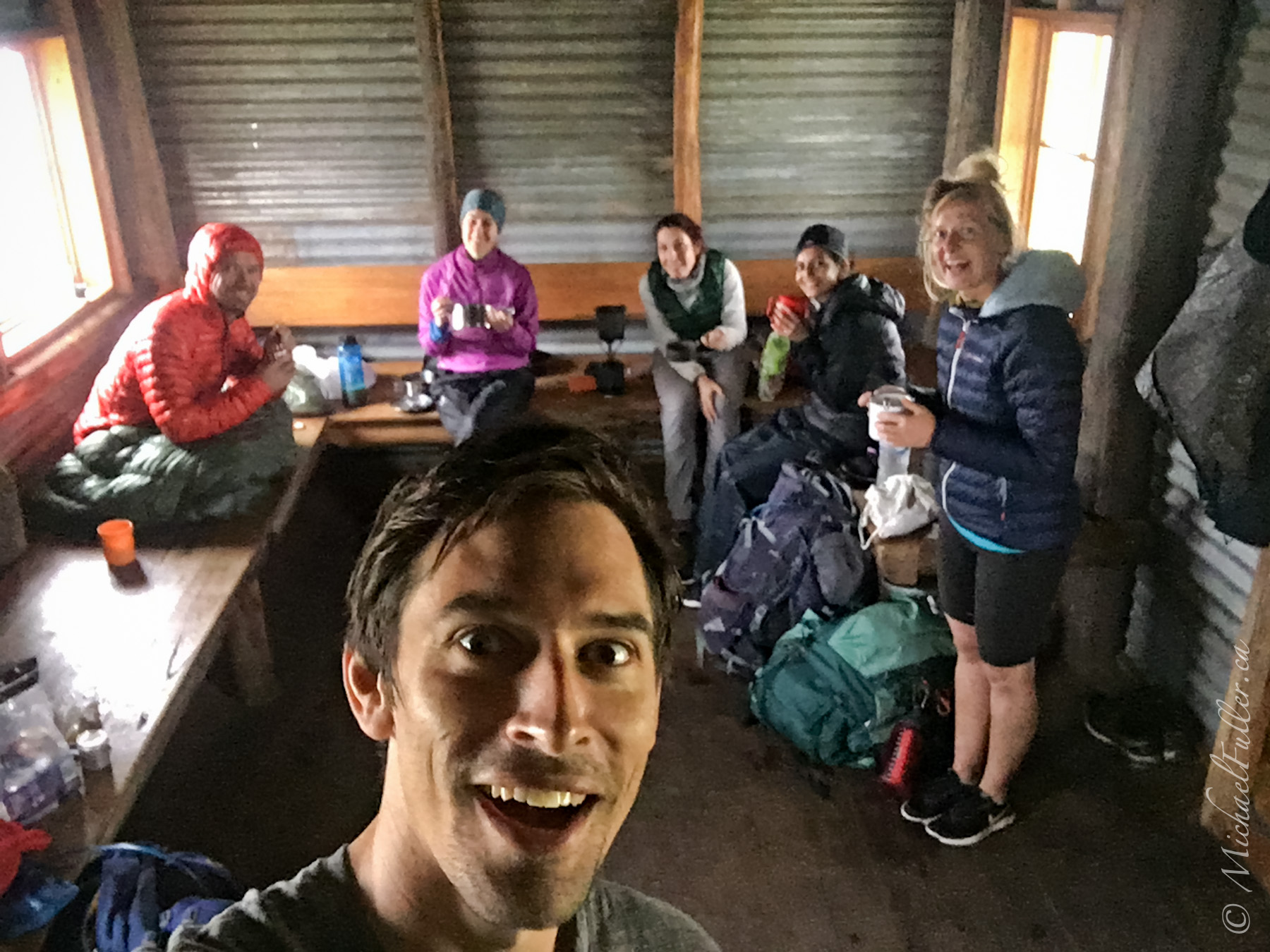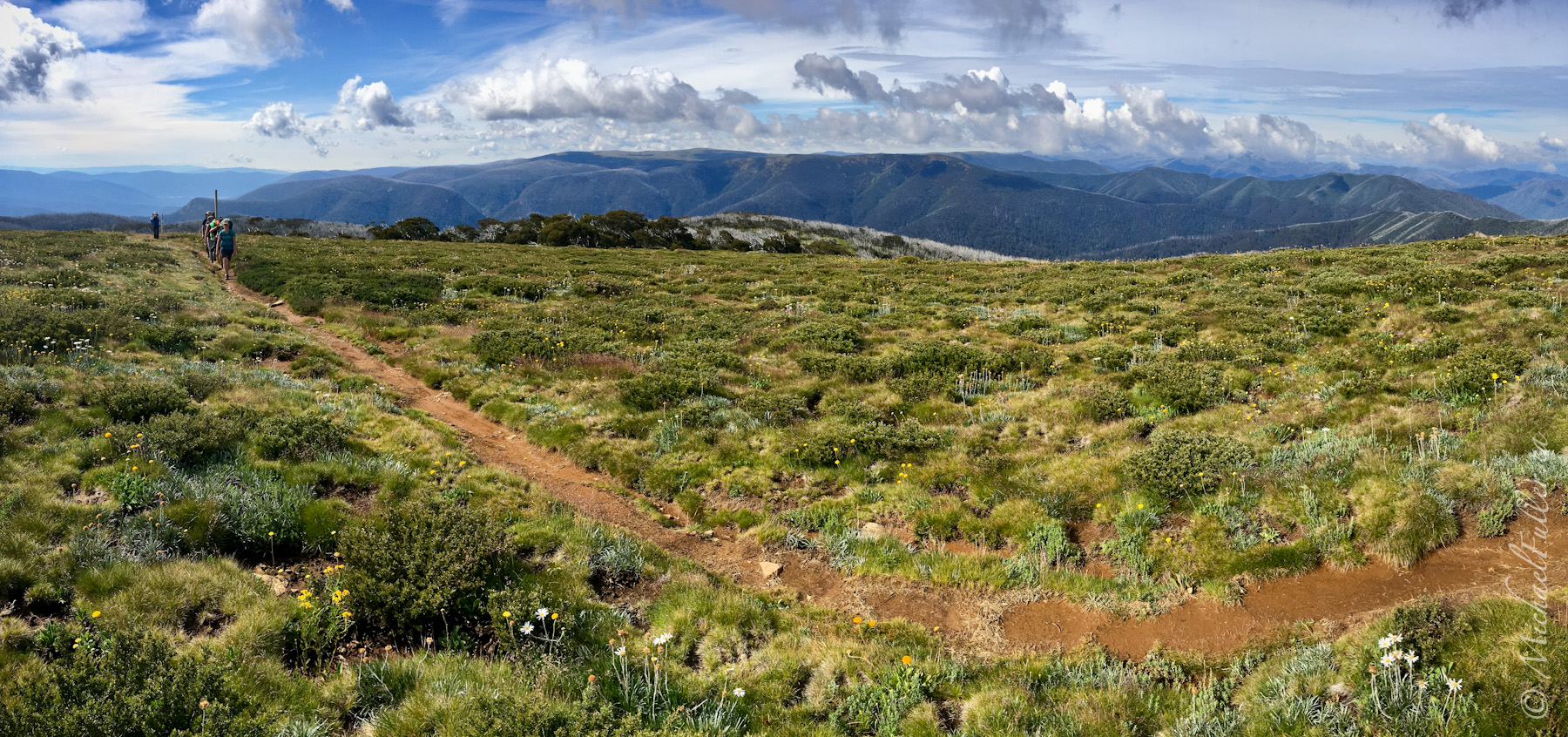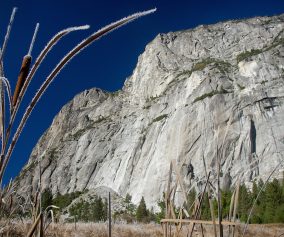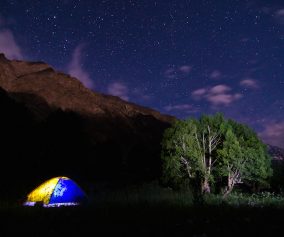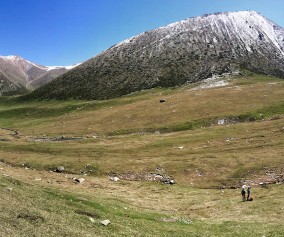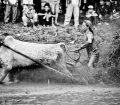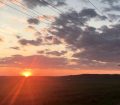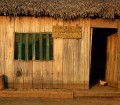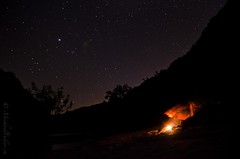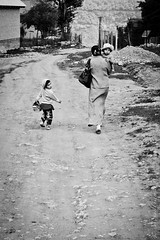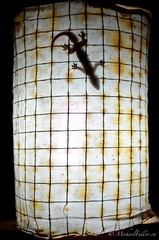
For New Years, Anna organised a 100km hike through Alpine National Park, starting with Mt Feathertop and finishing with Mt Bogong.
She’d originally suggested tackling this in four days, as she’d done previous hikes of the same length in that time. When I tried explaining that topography matters (specifically: 25km each day along with a 1500m elevation gain is quite different to 25km along a flat coastline) her very un-Anna-like (ie overly-serious) rebuttal was, “Mike, hiking is supposed to be difficult.”
Eventually with the growing posse of relatively unfit tag-alongs (myself included) she conceded that she’d plan around taking 5 days worst case… but still attempt to do it in 4 days.
Turns out that spending 6 months in strict lockdown during the year before embarking on a hike with ridiculously steep climbs and descents, leech-filled river crossings, a large group, and terrible weather (rain most days, serious thunderstorms on others) really slows you down!
In the end, finishing in 5 days was still ambitious, as we got up early, took few breaks, and finished hiking around sunset every day. Anna carried a hammock and a book the whole way – which may as well have been a rock of equal weight (as it would have taken up less space in her bag) for all the use she got out of those things.
One thing we were incredibly grateful for on this ‘Survivor’ challenge were the dozen huts we encountered across the ever changing landscape of the hike. They were wondrously eclectic, as you might expect structures built over an entire century, by various people, for various purposes, to be.
I was grateful to have anything to keep the rain off my head – however – having spent many nights inside beautiful Canadian and New Zealand mountain huts, and being a snob, it’s no secret I have fairly high standards for huts. So allow me to give you a simple review of the ones we found, grouped into 3 categories:
The ugliest ones were built by the former state government electrical grid as emergency shelters for their employees doing hydrological surveys for nearby dams. They were small depressing characterless prisons.
The crappiest ones were built by early farmers or grazers for themselves. They feel like barns inside, and probably were at some point. I was amazed that some of them aren’t condemned by our nanny state, as they were held together by only rotting wood, plastic sheeting, rat shit, and hope.
The most beautiful and functional ones were built by clubs (skiing, hiking, etc), like the one you will find in my Xmas and NY video. Cleve Cole Hut, with it’s nice stones walls, cleverly organised bunks, and cozy fireplace, is literally the nicest alpine hut I’ve ever been in – anywhere! There’s running water, and even a shower inside, all run without electricity!1
But these huts served a far more important purpose to us than mere objects of curiosity (or scorn): We were eternally grateful to them for providing mealtime shelter during the many thunderstorms. They also acted as beacons of hope, waypoints to gauge our progress, and, for this the most difficult hike many of us have ever completed, as landmarks on which to hang our many memories.
-Mike
P.S. I had an alternative title for this post, the name I gave it while planning the trip, which came from my uni days. My Russian mate Boris would take us on severe and exhausting hikes, where stopping our forward progress was only allowed for a brief lunch break each day. Our friendship circle referred to them as “Death Marches”.
So, naturally, when Anna (who’s also Russian) showed a similar penchant for organising gruelling itineraries, I couldn’t help but revive the old naming tradition. This trip shall forever be referred to as Anna’s “Death March”.
<—> <—> <—> <—> <—> <—>
Check out the photo gallery below! *Click any photo for full-screen images with captions*, and use your arrow keys to navigate.
- For more hut history, check out the Wikipedia page



